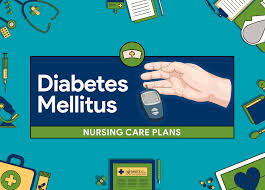References:
[1] Alvaro-Meca,
A., Jiménez-Sousa, M. A., Micheloud, D., Sánchez-Lopez, A., Heredia-Rodríguez, M.,
Tamayo, E., Resino, S., Group of Biomedical Research in Critical Care Medicine (BioCritic)
(2018). Epidemiological trends of sepsis in the twenty-first century (2000-2013):
an analysis of incidence, mortality, and associated costs in Spain. Population health
metrics, 16(1), 4.
[2] Amland,
R. C., & Sutariya, B. B. (2018). Quick Sequential [Sepsis-Related] Organ Failure
Assessment (qSOFA) and St. John Sepsis Surveillance Agent to detect patients at
risk of sepsis: an observational cohort study. American Journal of Medical Quality,
33(1), 50-57.
[3] Andaluz,
D., & Ferrer, R. (2017). SIRS, qSOFA, and organ failure for assessing sepsis
at the emergency department. Journal of thoracic disease, 9(6), 1459.
[4] Carvas,
J. M., Canelas, C., Montanha, G., Silva, C., & Esteves, F. (2016). Impact of
Compliance with a Sepsis Resuscitation Bundle in a Portuguese Emergency Department.
Acta medica portuguesa, 29(2), 88-94.
[5] Dellinger,
R. P., & Hussain, S. (2017). From Barcelona to New York: 15 years of transition
of sepsis performance improvement. Journal of thoracic disease, 9(10), 3453.
[6] Dellinger,
R. P., & Hussain, S. (2017). From Barcelona to New York: 15 years of transition
of sepsis performance improvement. Journal of thoracic disease, 9(10), 3453.
[7] Farrell,
C., & Casserly, B. (2018). Sepsis, the earlier the better, 3-to 1-hour bundle.
Journal of Emergency and Critical Care Medicine, 2.
[8] Garnacho‑Montero J, Gutiérrez‑Pizarraya A, Escoresca‑Ortega A et al (2013) De‑escalation of empirical therapy is associated with lower
mortality in patients with severe sepsis and septic shock. Intensive Care Med 40(1):32‑40. doi:10.1007/s00134‑013‑3077‑7
[9] Gasim, G.
I., Musa, I. R., Yassin, T., Al Shobaili, H. A., & Adam, I. (2016). Sepsis in
Buraidah Central Hospital, Qassim, Kingdom of Saudi Arabia. International journal
of health sciences, 10(2), 175-81.
[10] Gotts, J.E.,
& Matthay, M.A. (2016). Sepsis: Pathophysiology and clinical management. British
Medical Journal, 353. https//doi: 10.1136/bmj. i1585
[11] Gül, F.,
Arslantaş, M. K., Cinel, İ., & Kumar, A. (2017). Changing definitions of sepsis.
Turkish journal of anaesthesiology and reanimation, 45(3), 129.
[12] Gyawali,
B., Ramakrishna, K., & Dhamoon, A. S. (2019). Sepsis: The evolution in definition,
pathophysiology, and management. SAGE open medicine, 7, 2050312119835043.
[13] Institute
for Healthcare Improvement. (2017). Timing of antibiotics. Retrieved from http://www.ihi.org/resources/Pages/Measures/TimingofAntibiotics.aspx
[14] Kaplan,
L. J. (2015). Systemic Inflammatory Response Syndrome. Retrieved from emedicine.medscape.com/article/168943-overview
[15] Kim, M.,
Watase, T., Jablonowski, K. D., Gatewood, M. O., & Henning, D. J. (2017). A
Sepsis-related Diagnosis Impacts Interventions and Predicts Outcomes for Emergency
Patients with Severe Sepsis. Western Journal of Emergency Medicine, 18(6), 1098.
[16] Kleinpell,
R. (2017). Promoting early identification of sepsis in hospitalized patients with
nurse-led protocols.
[17] Kleinpell, R. M., Schorr,
C. A., & Balk, R. A. (2016). The new sepsis definitions: implications for critical
care practitioners. American Journal of Critical Care, 25(5), 457-464.
[18] Kleinpell,
R., Blot, S., Boulanger, C., Fulbrook, P., & Blackwood, B. (2019). International
critical care nursing considerations and quality indicators for the 2017 surviving
sepsis campaign guidelines. Intensive care medicine, 45(11), 1663-1666.
[19] Kumar A
(2016) Systematic bias in meta-analyses of time to antimicrobial in sepsis studies.
Crit Care Med 44: e234–e235.
[20]
Le Conte, P., Thibergien, S., Obellianne, J.
B., Montassier, E., Potel, G., Roy, P. M., & Batard, E. (2017). Recognition
and treatment of severe sepsis in the emergency department: retrospective study
in two French teaching hospitals. BMC emergency medicine, 17(1), 27.
[21]
Lester, D., Hartjes, T., & Bennett, A.
(2018). CE: A Review of the Revised Sepsis Care Bundles. AJN The American Journal
of Nursing, 118(8), 40-49.
[22]
Levy, M. M., Evans, L. E., & Rhodes, A.
(2018). The surviving sepsis campaign bundle: 2018 update. Intensive care medicine,
44(6), 925-928.
[23]
Lindo, M. M. (2017). Evaluation of Automated
Reminders to Reduce Sepsis Mortality Rates.
[24]
Machado, F. R., Ferreira, E. M., Schippers,
P., de Paula, I. C., Saes, L., de Oliveira, F. I., Tuma, P., Nogueira Filho, W.,
Piza, F., Guare, S., Mangini, C., Guth, G. Z., Azevedo, L., Freitas, F., do Amaral,
J., Mansur, N. S., Salomão, R., SPDM against sepsis project (2017). Implementation
of sepsis bundles in public hospitals in Brazil: a prospective study with heterogeneous
results. Critical care (London, England), 21(1), 268. doi:10.1186/s13054-017-1858-z.
[25]
Maclay, T., & Rephann, A. (2017). The impact of early identification
and a critical care–based sepsis response team on sepsis outcomes. Critical care
nurse, 37(6), 88-91.
[26]
Mayr, F. B., Yende, S., & Angus, D. C.
(2014). Epidemiology of severe sepsis. Virulence, 5(1), 4-11.
[27]
McColl, T., Gatien, M., Calder, L., Yadav,
K., et al. (2016). Implementation of an Emergency Department Sepsis Bundle and System
Redesign: A Process Improvement Initiative. JCMU, 0(0), 1-10.
[28]
Meade, C. (2018). Intensive Care Unit Nurse
Education to Reduce Sepsis Mortality Rates.
[29]
Memon, J. I., Rehmani, R. S., Alaithan, A.
M., El Gammal, A., Lone, T. M., Ghorab, K., & Abdulbasir, A. (2012). Impact
of 6-hour sepsis resuscitation bundle compliance on hospital mortality in a Saudi
hospital. Critical care research and practice, 2012.
[30] Milano, P. K., Desai, S. A., Eiting, E. A., Hofmann, E. F., Lam, C. N., Menchine,
M. (2018). Sepsis Bundle Adherence Is Associated with Improved Survival in Severe
Sepsis or Septic Shock. Western Journal of Emergency Medicine, 19(5),
774.
[31]
Neviere, R., Parsons, P. E., & Finlay,
G. (2017). Sepsis syndromes in adults: Epidemiology, definitions, clinical presentation,
diagnosis, and prognosis. Monografía en Internet]. Wolters Kluwer: UpToDate.
[32]
Postelnicu, R., & Evans, L. (2017). Monitoring
of the physical exam in sepsis. Current Opinion in Critical Care,23(3), 232-236.
doi:10.1097/mcc.0000000000000403
[33]
Prasad, P. A., Shea, E. R., Shiboski, S., Sullivan,
M. C., Gonzales, R., & Shimabukuro, D. (2017). Relationship between a sepsis
intervention bundle and in-hospital mortality among hospitalized patients: a retrospective
analysis of real-world data. Anesthesia & Analgesia, 125(2), 507-513.
[34]
Rhodes, A., Evans, L. E., Alhazzani, W., Levy,
M. M., Antonelli, M., Ferrer, R., ... & Rochwerg, B. (2017). Surviving sepsis
campaign: international guidelines for management of sepsis and septic shock: 2016.
Intensive care medicine, 43(3), 304-377.
[35]
Rhodes, A., Phillips, G., Beale, R., Cecconi,
M., Chiche, J. D., De Backer, D., Girardis, M. (2015). The surviving sepsis campaign
bundles and outcome: Results from the International Multicenter Prevalence Study
on Sepsis (the IMPreSS study). Intensive Care Medicine, 41(9), 1620-1628.
[36]
Singer, M., Deutschman, C. S., Seymour, C. W., Shankar-Hari, M.,
Annane, D., Bauer, M., ... & Hotchkiss, R. S. (2016). The third international
consensus definitions for sepsis and septic shock (Sepsis-3). Jama, 315(8),
801-810.
[37]
Tulli, G. (2019). Diagnosis and Management
of Sepsis and Septic Shock: An Evidence-Based Review. In Practical Trends in Anesthesia
and Intensive Care 2018 (pp. 137-178). Springer, Cham.
[38]
van Vught LA, Klein Klouwenberg PM, Spitoni
C, et al. Incidence, risk factors, and attributable mortality of secondary infections
in the intensive care unit after admission for sepsis. JAMA. 2016;315(14):1469-1479.
[39] Walsh, J. (2017)

 Use of Un-Prescribed Drugs and Traditional Medications among Pregnant Women Attending Primary Health Centres in Kano, NigeriaAuthor: Gambo I. MDOI: 10.21522/TIJNR.2015.06.02.Art001
Use of Un-Prescribed Drugs and Traditional Medications among Pregnant Women Attending Primary Health Centres in Kano, NigeriaAuthor: Gambo I. MDOI: 10.21522/TIJNR.2015.06.02.Art001 Fear of Susceptible to Infectious Disease Experienced among the Hospitalized Patients in the University of Calabar Teaching Hospital, CalabarAuthor: Emilia James OyiraDOI: 10.21522/TIJNR.2015.06.02.Art002
Fear of Susceptible to Infectious Disease Experienced among the Hospitalized Patients in the University of Calabar Teaching Hospital, CalabarAuthor: Emilia James OyiraDOI: 10.21522/TIJNR.2015.06.02.Art002 Effectiveness of Psycho-Education Program for Knowledge of Family Caregivers of Patient’s with BAD at El-tigani El-mahi Psychiatric Teaching Hospital, Sudan, 2017- 2019Author: Mohammed Ateeg Abdelrahman AhmedDOI: 10.21522/TIJNR.2015.06.02.Art003
Effectiveness of Psycho-Education Program for Knowledge of Family Caregivers of Patient’s with BAD at El-tigani El-mahi Psychiatric Teaching Hospital, Sudan, 2017- 2019Author: Mohammed Ateeg Abdelrahman AhmedDOI: 10.21522/TIJNR.2015.06.02.Art003 Perception and Utilization Status of Insecticide Treated Net among Pregnant Women Attending Antenatal Care in University of Calabar Teaching Hospital, Calabar (UCTH)Author: Emilia James OyiraDOI: 10.21522/TIJNR.2015.06.02.Art004
Perception and Utilization Status of Insecticide Treated Net among Pregnant Women Attending Antenatal Care in University of Calabar Teaching Hospital, Calabar (UCTH)Author: Emilia James OyiraDOI: 10.21522/TIJNR.2015.06.02.Art004 Impact of Septic Bundle on Critically Ill Patients Outcomes: Scoping ReviewAuthor: Dalia Zaki RehbeiniDOI: 10.21522/TIJNR.2015.06.02.Art005
Impact of Septic Bundle on Critically Ill Patients Outcomes: Scoping ReviewAuthor: Dalia Zaki RehbeiniDOI: 10.21522/TIJNR.2015.06.02.Art005 Effect of Nursing Intervention on Knowledge of Diabetes Mellitus among Pregnant Women Attending Selected General Hospitals in Lagos, NigeriaAuthor: Ademuyiwa I. YDOI: 10.21522/TIJNR.2015.06.02.Art006
Effect of Nursing Intervention on Knowledge of Diabetes Mellitus among Pregnant Women Attending Selected General Hospitals in Lagos, NigeriaAuthor: Ademuyiwa I. YDOI: 10.21522/TIJNR.2015.06.02.Art006 Barriers to the Application of the Nursing Process in the Regional Hospital Bamenda-CameroonAuthor: Loh Stanley YuhDOI: 10.21522/TIJNR.2015.06.02.Art007
Barriers to the Application of the Nursing Process in the Regional Hospital Bamenda-CameroonAuthor: Loh Stanley YuhDOI: 10.21522/TIJNR.2015.06.02.Art007 An Evaluation of Antenatal Screening Services Provided in Health Facilities of Lundazi District, ZambiaAuthor: Patricia MambweDOI: 10.21522/TIJNR.2015.06.02.Art008
An Evaluation of Antenatal Screening Services Provided in Health Facilities of Lundazi District, ZambiaAuthor: Patricia MambweDOI: 10.21522/TIJNR.2015.06.02.Art008 Advantages of Cooperative Learning: A Systematic ReviewAuthor: Loh Stanley YuhDOI: 10.21522/TIJNR.2015.06.02.Art009
Advantages of Cooperative Learning: A Systematic ReviewAuthor: Loh Stanley YuhDOI: 10.21522/TIJNR.2015.06.02.Art009
